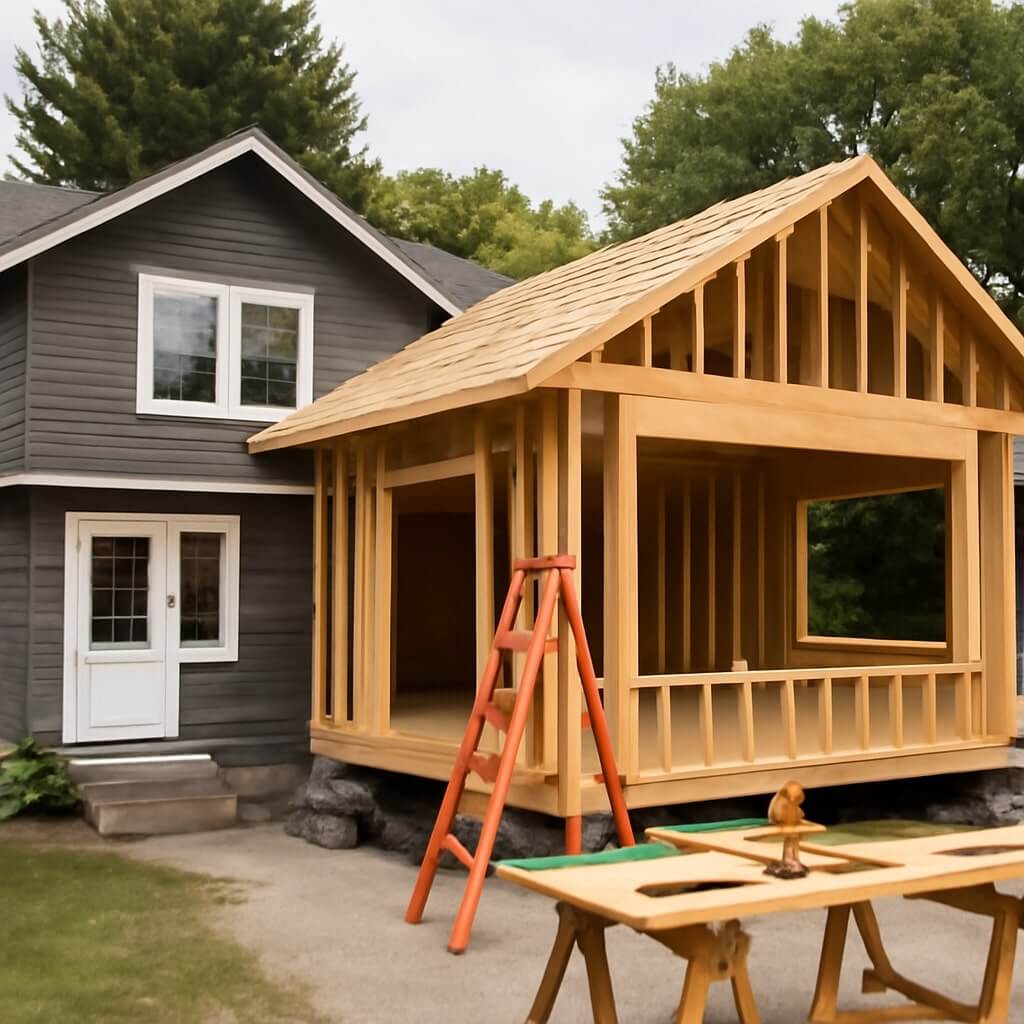When planning a home addition in Seattle, it’s essential to approach budgeting with a strategic mindset. You’ll want to start by evaluating your current financial situation, as this sets the foundation for your project. Next, understanding local costs can prevent unexpected surprises down the line. Finally, incorporating a contingency plan will help safeguard your finances. But what specific steps should you take to guarantee your budget remains intact throughout the process?
Key Takeaways
- Conduct a thorough budget evaluation, accounting for income, savings, and obligations to determine affordability for the home addition.
- Research local material and labor costs in Seattle, including permitting and inspection fees, to create an accurate budget.
- Set aside a contingency fund of 10-20% for unexpected expenses like structural issues or permit delays during the construction process.
- Monitor expenses consistently and adjust spending habits based on tracked data to stay on budget throughout the project.
- Communicate openly with contractors about budget constraints and reassess financial situations periodically during the planning stages.
Assessing Your Current Financial Situation
Before diving into the costs of a home addition in Seattle, it’s essential to assess your current financial situation. Start with a thorough budget evaluation; identify your income, savings, and existing financial obligations. This gives you a clear picture of what you can afford.
Next, implement expense tracking to monitor your spending habits. By keeping tabs on your monthly expenses, you can pinpoint areas where you can cut back. This proactive approach guarantees you’re prepared to allocate funds for the home addition while maintaining financial stability.
Building a solid foundation now sets you up for success in your project.
Researching Average Costs and Pricing
As you commence on planning your home addition in Seattle, understanding average costs and pricing is essential for making informed decisions.
Start by utilizing reliable pricing resources to gather data on local market rates. Conducting a cost comparison will help you identify the best options available.
Utilize reliable pricing resources to gather local market data and conduct cost comparisons for the best options available.
Consider these factors:
- Labor costs in your area
- Materials and finishes you prefer
- Permitting and inspection fees
Contingency Planning for Unexpected Expenses
While you plan your home addition, it’s essential to incorporate a contingency budget to account for unexpected expenses that may arise during construction.
Setting aside an emergency fund of 10-20% of your total budget can safeguard you against these costs. Common surprises include hidden structural issues or delays in permits, which can greatly impact your unexpected budget.
By anticipating these potential pitfalls, you can avoid financial stress and guarantee your project stays on track. Regularly review your contingency allocations, adjusting as needed, to maintain a balanced budget throughout the process.
This proactive approach is key to a successful home addition.
Conclusion
To summarize, effectively budgeting for a home addition in Seattle requires a strategic approach. By evaluating your financial situation, researching local costs, and implementing a solid contingency plan, you can navigate the complexities of this investment with confidence. Remember, being proactive about your budget not only helps you avoid surprises but also guarantees your project aligns with your financial goals. Stay informed and adaptable throughout the process to achieve the best possible outcome for your home.

